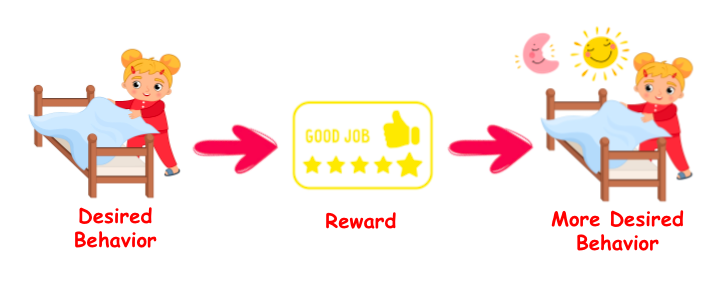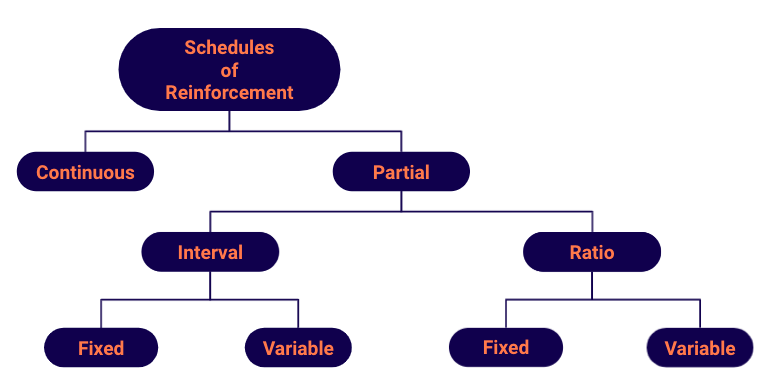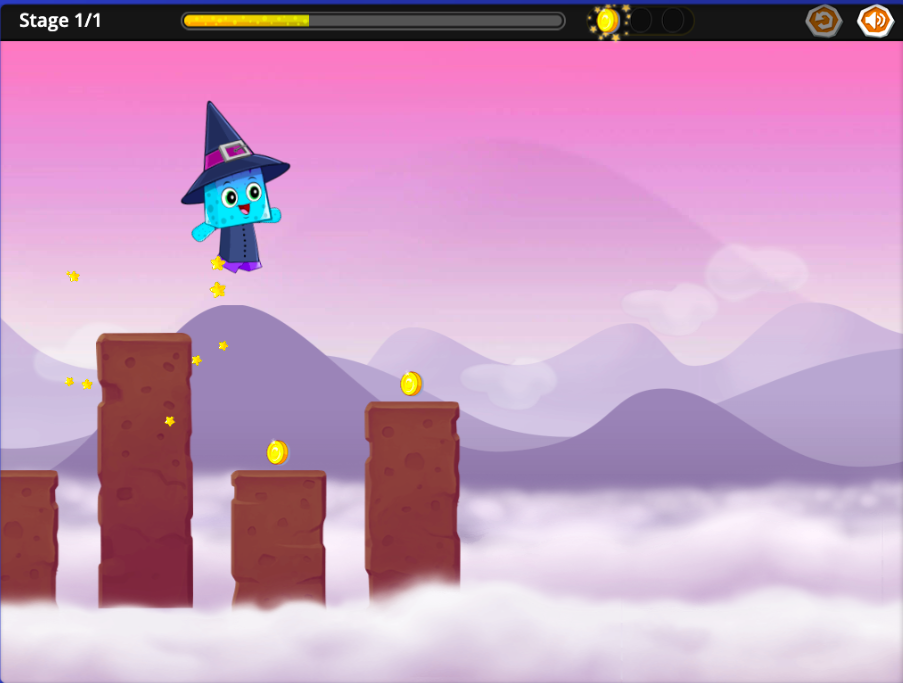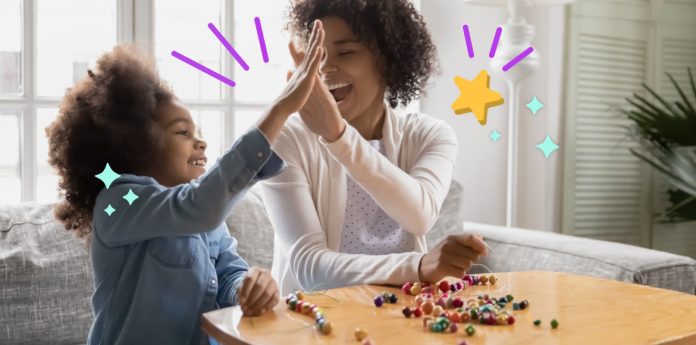Table of Contents:
- What is Positive Reinforcement
- Types of Positive Reinforcement
- Examples of Positive Reinforecement
- How Reinforcement Schedules Work
- Positive Reinforcement in Classroom: Tips for Teachers
- Positive Reinforcement at Home: Tips for Parents
- Positive Reinforcement in Games
- Frequently Asked Questions (FAQ’s)
Remember the joy of getting a star on your hand from your primary teacher when you did well in a class test? How did that feel? Did it influence your behavior in a good way? Did it motivate you to perform better the next time? Well, that is positive reinforcement.
Positive Reinforcement is a reward for doing something well. It makes the occurrence of the desired behavior more likely to take place. There are mainly two types of reinforcements – positive & negative.
Positive Reinforcement – What is it?
Positive reinforcement is a term coined by a famous psychologist, B.F. Skinner. The concept is very well-known in the theory of Operant Conditioning.
According to this theory, positive reinforcement is an extremely powerful behavior management strategy that focuses on changing or creating new behaviors by offering a favorable stimulus like reward or praise. These rewards and praises increase the probability of the desired behavior.

Sometimes, positive reinforcement happens very naturally. For example, when we help someone in need, we may receive a thank you immediately. This most likely motivates us to help others in the future, encouraging our attitude toward helping others.
However, positive reinforcement works best when it is planned and used deliberately. It yields great results when used to create new behaviors or strengthen the existing behaviors in a formal setting like a training camp or a classroom.
Let us understand this better by discussing the types of positive reinforcements.
SplashLearn: Most Comprehensive Learning Program for PreK-5

SplashLearn inspires lifelong curiosity with its game-based PreK-5 learning program loved by over 40 million children. With over 4,000 fun games and activities, it’s the perfect balance of learning and play for your little one.
Try for freePositive Reinforcement – Types
Positive reinforcements are differentiated based on a positive stimulus, also known as the reinforcer.
A reinforcer is a reward, event, or action associated with the desired behavior. The stimulus, or the reinforcer, reinforces the behavior, making it more likely that the behavior will reoccur.
These can be categorized into five kinds:
1. Natural or Direct Reinforcers
These types of positive reinforcers are used due to the desired behavior. This is essentially an intrinsic type of reinforcement for which the reinforcer does not have to put in much effort.
For example, a student studying well for the exam to gain the teacher’s attention, or a kid making their own bed to make their mom happy.
Related Reading: Best Teaching Strategies for This Year
2. Social Reinforcers
These positive reinforcers are used when a child (or an adult) seeks social recognition from friends, family, and peers. Mainly, it’s the acknowledgment or the approval of the desired behavior.
For example, a teacher praises a student in front of the entire class. Or a parent says ‘well done’ or ‘good job’ when a child helps them do household chores.
3. Tangible Reinforcers
These positive reinforcers are physical or monetary reinforcers like cash, toys, treats, awards, bonuses, etc. These physical reinforcers are used to reinforce the desired behaviors. This is the most commonly used form of positive reinforcement.
However, these kinds of reinforcers require a lot of consideration and caution, or they may be perceived as a bribes.
4. Token Reinforcers
These types of positive reinforcers are tokens. They are used in the form of points and stars as rewards. Even though these have little value, they can be exchanged for something of value in return.
For example, a teacher can allot points for specific behaviors and later reward the student who scores the maximum points.
5. Activity Reinforcers
This type is the most powerful form of positive reinforcement. The students (or adults) are allowed to participate or indulge in the activity of their choice.
The activities include games, sports, screen time, playtime, etc. The promise of spending time doing their favorite activity strengthens the desired behaviors.
Positive Reinforcement – Examples in Day-to-Day Life
The concept of positive reinforcement is not entirely understood a lot of the time. It is expected to be used in limited situations like classrooms and training settings, but positive reinforcement often occurs in everyday situations.
Here are a few examples of positive reinforcement in our daily lives that we tend to miss:
- A mother praising her kid for doing homework independently
- A teacher giving free time to the students to stay quiet during class
- An employer giving a bonus to an employee for not taking any sick leaves during the year
- Prime parking slots are being reserved in malls for those who use electric vehicles
- Dietician giving a cheat meal for sticking to a healthy diet for an entire month
- Brands introducing rewards programs to build customer loyalty
How Do Reinforcement Schedules Work?
Choosing the right kind of reinforcement is not enough. Its timing also plays an important role in its effectiveness.
Hence, different schedules of reinforcement come in handy to increase the effectiveness of the reinforcers used.
The schedule of reinforcement refers to the frequency and manner in which the desired behavior is reinforced.

The two major types of reinforcement schedules are:
1. Continuous Reinforcement
In this type of schedule, the desired behavior is reinforced every time it occurs. This schedule is most suitable when teaching a new behavior because it leads to immediate results by creating a strong association between the behavior and response.
Be that as it may, continuous reinforcement is time-consuming and leads to satiation a lot sooner than the other types of reinforcement.
2. Partial Reinforcement
In this type of schedule, the desired behaviors are not reinforced each time they occur. The behaviors are reinforced at an interval that is either fixed or variable. The intervals are set to maximize the effectiveness of the reinforcers. This schedule is most suitable when a behavior has already been established.
There are four kinds of partial schedules according to different needs and purposes:
Fixed Ratio
The behavior is reinforced after a specific number of occurrences. For instance – after every two responses.
Variable Ratio
The behavior is reinforced after a variable number of occurrences. For instance – after the first response, then after the third response, and then maybe after the fifth response.
Fixed Interval
The behavior is reinforced after a specific period. For instance – after every alternate hour or a day or a week.
Related Reading: Best Educational Websites for Kids that Spark Curiosity
Variable Interval
The behavior is reinforced after a variable period. For instance – after one minute, then after thirty minutes, and then after ten minutes.
Schedules of reinforcement can play an important role in the effectiveness of the reinforcement.
For example, parents can use the continuous reinforcement schedule while forming a new habit in a classroom or at home. Once a habit is formed, parents may change it to a partial reinforcement schedule, depending on the need and the kind of behavior being reinforced.
Positive Reinforcement in Classrooms: Tips for Teachers

Positive reinforcement is a well-proven and research-based classroom management technique. It works for almost all kinds of classrooms, learners, and situations. The only aspects that always need consideration are which behaviors need to be reinforced and how often.
Here are a few tips for teachers to effectively implement the reinforcement strategies:
Target one behavior at a time
Every learner displays multiple behaviors; hence, the teacher needs to target specific types of reinforcement for specific behaviors. Focusing on one or two behaviors at a time is highly advisable so the child clearly identifies the reward linked to each behavior. This could be done by creating specific reinforcement plans for each behavior.
Use the most suitable kind of reinforcement
What motivates us may not be motivating for a child, as children think differently than adults. Hence, choosing the right kind of reinforcement tool is very important. One of the most effective ways would be to present the child with various options and let them choose what works for them.
Deliver and monitor the right kind of reinforcement
Introducing the reinforcer when the behavior has already been established will not have the desired effect. Hence, delivering the right reinforcement at the right time is very important.
Also, using the same type of reinforcement for a longer period will lead to satiation. Hence, monitoring and evaluating the effectiveness of the reinforcement and changing it before it satiates is extremely crucial.
Positive Reinforcement at Home: Tips for Parents
Positive reinforcement is one of the best and most effective strategies used for positive parenting. Praise, affection, appreciation, and privileges are all common parts of parenting, so positive reinforcement comes naturally to parents. Just like adults, kids also crave acknowledgment and recognition for their efforts.
Parents, these tips would help you use positive home reinforcement more effectively!

Prefer intangible rewards over tangible rewards
Use praise more than treats, toys, or allowance. This is because intrinsic motivation (without physical rewards) always goes longer than extrinsic motivation (with physical rewards).
Praise them for their efforts and not just for the results
Efforts are equally important as results. Hence, providing constructive feedback on kids’ efforts is as important as celebrating their victories.
For example, saying ‘I am proud of you for studying so hard’ works better than saying ‘well done for scoring such amazing grades.’
Provide timely reinforcement
The choice and time of reinforcement play an equally important role in its effectiveness. Naturally, reinforcing a behavior immediately after it has been displayed is proven to be much more effective than delayed reinforcement.
The Other Side of Positive Reinforcement
Positive reinforcement is an extremely powerful tool used to strengthen existing behaviors or create new ones. But one thing that cannot be ignored is that it can also strengthen undesirable behavior.
Parents tend to pay more attention to their kids when they misbehave, reinforcing the kid’s behavior. The kid will likely repeat the same behavior because they know they can grab their parents’ attention. The more they misbehave, the more attention they will gather, eventually leading to a positive reinforcement trap.
In such cases, parents not only need to think of the most suitable type of reinforcement, be it positive or negative reinforcement, but also the timing of the reinforcement.
Thus, positive reinforcement is much more than getting a star from the teacher. It can be a very effective behavior management strategy in the classroom and at home. However if not used properly, it may turn out to be counterproductive as a result of the positive reinforcement trap.
Positive Reinforcement & Games – A Powerful Duo!
Games are a perfect example of positive reinforcement.
Research shows that positive reinforcement has been associated with an increased propensity to play a game with a reward system. This is because players like to be acknowledged for their accomplishments and will probably stop playing a game if they are not rewarded. Thus, games can use positive reinforcement to develop desired behaviors, especially in children’s education.

Related Reading: Best Tips & Strategies to Teach English Language
SplashLearn games are a perfect example of how positive reinforcement in games can be used. These games teach new concepts and help kids practice and strengthen their understanding of concepts they have already learned.
SplashLearn games use many rewards, including collectibles and avatar customization, that work perfectly for providing the right kind of positive reinforcement at the right time.
With a community of over 40+million fearless learners, it’s time for you to choose the best teaching tools for your kid! So, don’t wait anymore. Sign up using the link below!
Frequently Asked Questions (FAQ’s)
What is positive reinforcement?
Positive Reinforcement is encouraging or establishing a pattern by offering rewards when the desired behavior is exhibited.
Why is positive reinforcement important?
Positive reinforcement helps strengthen existing behaviors or create new ones by associating them with something positive, making those behaviors more likely to happen in the future.
What is an example of positive reinforcement?
Offering a treat to a kid for scoring well in a class test is the simplest example of positive reinforcement.
How is positive reinforcement different from negative reinforcement?
Positive reinforcement strengthens a behavior by adding something desirable, whereas negative reinforcement strengthens a behavior by removing something undesirable. Hence, the difference lies in whether something is added or removed. However, both aim at strengthening behaviors.

















